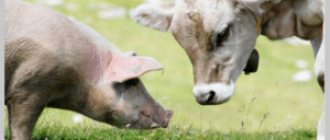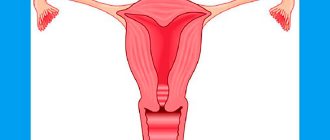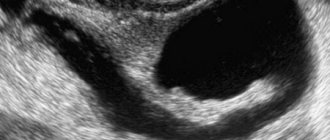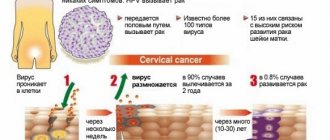Trichinosis is one of the serious parasitological diseases of humans with the presence of natural foci and quite frequent registration in many countries of the world, as well as in Russia. The acute development of the disease and the possible severe consequences of trichinosis are extremely relevant in the context of parasitology.
Trichinosis is a helminthiasis with a naturally focal spread, caused by nematodes of the genus Trichinella, characterized by an acute course with the presence of a specific “tetrad of symptoms”, which can lead to disability and even death.
Foci of trichinosis correspond to the distribution of natural reservoirs (bears, wild boars, badgers and others) and are recorded in the USA, Germany, Poland, Ukraine, Belarus, and the Baltic countries. In Russia, the greatest activity is recorded in the Khabarovsk and Krasnoyarsk Territories, the Magadan Region, and the Krasnodar Territory. There are also synanthropic (urban) foci of trichinosis, where the reservoir can be domestic animals - dogs, cats, pigs, as well as rodents.
Trichinosis, epidemic spread scheme
Causes of trichinosis
The source of infection for humans are different types of adult animals infected with Trichinella - wild animals: bears, foxes, nutria, wolves, wild boars.
Infected marine species include: seals, sea lions, beluga whales, walruses, and whales. No exception is livestock, pets and rodents: dogs, pigs, cows, goats, mice, rats, cats. Trichinosis is not transmitted from person to person.
The most common causes of infection with trichinosis are:
- good adaptation of the pathogen to temperatures;
- the human body is extremely sensitive to trichinosis;
- collective outbreaks of the disease. This often happens in groups of people, families who have consumed meat with helminths;
- relapses of trichinosis occur due to instability of the immune system that arose after the first invasion.
Provoking factors for the development of the disease
Pork meat affected by trichinosis
Affected meat
A person becomes infected by consuming food, that is, orally. Helminth larvae enter the human body and begin active development. The most dangerous type of meat is considered to be dried, raw, improperly prepared (boiled or fried) and smoked lard with streaks.
Diagnostics
How can you determine that you have trichinosis? Most often, the diagnosis is made according to epidemic indications. This means that if many people come to hospitals with the same symptoms that arise after eating poorly cooked meat, they will be examined specifically for this disease.
What tests are taken?
As already mentioned, female Trichinella do not lay eggs, so testing the stool for eggworms will not help.
What indicates a trichinosis infection:
- Complete blood count: eosinophilia more than 10%;
- The titer of antibodies to trichinosis antigen will increase.
If the diagnosis is questionable, a biopsy of muscle tissue will be taken from the patient, that is, a piece of muscle will be pinched off and examined under a microscope. If larvae and their capsules are found, then the diagnosis is made.
What happens to contaminated meat?
If the same suspicious meat that caused the disease is preserved, it will be taken to the laboratory. There they will conduct a series of diagnostic tests to identify the causative agent of trichinosis. If the result is positive, this will speed up the correct diagnosis of the person.
Symptoms of trichinosis
Facial swelling due to trichinosis
Swelling of the hands due to infection with these parasites
Rashes with lesions
Initially, trichinosis in humans does not have any specific symptoms. There are no visible changes in the muscular system.
Proteins, which are the main component of the helminth’s body, harm humans. Proteins are very strong allergy triggers and foreign elements for the human body. When infected, a severe allergic reaction occurs.
The latent period lasts from 1 week to 1 month. With trichinosis, symptoms are not pronounced. The prolonged development of symptoms indicates that the disease is becoming severe.
Symptoms of mild and moderate forms of trichinosis are as follows:
- hyperthermia. Body temperature is relatively not high (37.5 C), the daily deviation is 1C;
- swelling of the legs, arms or whole body (see photo above). This occurs due to the body’s sharp reflex to the ingress of foreign protein;
- muscle pain. This symptom is one of the signs of a severe form. Acute pain manifests itself in the calf muscles, which affect the entire muscular system. When moving and touching, the pain worsens. Symptoms and signs begin to bother a person from 4 days after infection;
The following symptoms are skin rashes, which have the following forms:
- urticaria - pinkish blisters of different sizes;
- utricarial rash - very itchy blisters that are slightly raised above the skin;
- papular rash - multiple plaques connecting to each other.
The severe form of trichinosis has its own complications:
- meningoencephalitis – pathological processes in the membranes of the brain;
- eosinophilic pneumonia. The occurrence of the disease is provoked by a high content of eosinophils (foods that cause allergies) in the lungs. Against the background of pneumonia, pleurisy and symptoms of bronchial asthma may develop;
- myocarditis – inflammation of the heart muscle (myocardium), due to allergies and a sharp reaction of the immune system. The complication can lead to the death of the patient;
- nephritis – pathology of kidney tissue;
- hepatitis is an inflammatory disease of the liver.
Symptoms
If a person eats contaminated meat, what will happen to him?
Stages of trichinosis
- A day or two after eating pig meat infected with trichinosis, a person will feel symptoms more similar to an intestinal infection:
- General malaise, weakness;
- Nausea and vomiting;
- Diarrhea and abdominal pain;
- Increased body temperature.
This is how the intestinal stage of trichinosis begins, which lasts up to 2 months. At this stage, the larvae are most vulnerable to anthelmintic drugs, but treatment for objective reasons is rarely timely.
- Having spread through the bloodstream throughout the body, the larvae penetrate the muscles. At this stage of the disease, called muscular, the symptoms are more clear:
- Myositis: fever, muscle pain, cramps;
- Hemorrhages;
- Visual impairment;
- Difficulty chewing and swallowing food;
- Allergic dermatitis: skin rash accompanied by itching.
In severe cases, when the larvae have managed to settle in the diaphragmatic and intercostal muscles, severe respiratory failure occurs, including respiratory arrest.
Why do these symptoms occur?
The first line of defense against the parasite is eosinophils. The bone marrow receives information about the invasion and begins to create more soldiers - eosinophils. Therefore, the results of a general blood test will always show eosinophilia: an increase in the level of eosinophils by more than 10%. These blood cells surround the invader and inject their enzymes and other active substances into it.
The results of the war are reflected not only on the parasite, but also on all internal organs. An allergic reaction is triggered, the symptoms of which are rash and itching. The microvasculature also dilates, causing bruising and swelling.
The second line of defense is our immunity. Lymphocytes scan the parasite, find a foreign substance, trichinosis antigen, and begin to synthesize antibodies. These antibodies stick to the invader and encourage other blood cells to fight the enemy. The higher the titer (amount) of antibodies, the stronger the infection.
The stronger your immune system, the better it will cope with invaders. Therefore, it is very important to support and strengthen it.
What does Trichinella itself do? The larvae have a special device with which they first drill into the intestinal wall, causing intestinal symptoms, and then penetrate into the muscles.
…
The goal of the larva is to crawl into the muscle and surround itself with a protective capsule in order to calmly wait for a change of owner.
Severity of the condition
The severity of symptoms depends on the number of worms that have entered the body. The clinic distinguishes three degrees of severity of the patient’s condition:
- Mild: there are practically no symptoms of illness. The temperature remains at 37-37.5 C for a long time.
- Moderate: the fever is more pronounced, the thermometer shows 38-39 C. The calf muscles hurt, a rash appears on the skin and swelling of the lower extremities.
- Severe: temperature below 40 C, unbearable pain in almost all muscle groups, the face is swollen, bruises under the eyes, blurred vision, it becomes difficult to breathe.
Stages of trichinosis
At the onset of the disease, symptoms depend on the number of larvae. Further progression depends on the proliferation of parasites and the general state of the patient’s immunity.
Severe complications of the disease are caused not by the vital activity of helminths, but by the body’s non-standard reaction to the ingestion of a foreign protein.
The stages of trichinosis are:
- Trichinosis infestation (infestation of parasites). Trichinella penetrates the human body and is located in the small intestine. Fixation occurs on the membrane, causing severe inflammation. Over the course of several months, helminths develop into adults in the intestines, fertilization occurs, and further spread of more parasites occurs. One Trichinella can produce more than 1,500 new individuals.
- Dissemination (reproduction of parasites throughout the body). Helminths begin to migrate into the tissues of the whole body, entering the muscles. The larvae spread through blood vessels. After entering the blood, helminths attach to muscle fibers. The development and growth of Trichinella begins, and allergens are released. The intoxication process and allergies progress in the body.
- Encapsulation stage. At this time, the tissues are regenerated. Trichinella reaches 0.5 mm in size and takes the shape of a spiral. The larva is enveloped in a capsule and temporarily stops development. Symptoms and discomfort cease to be pronounced and practically disappear. After a certain time, the capsule with the larva calcifies and the released salts can kill the helminth. Trichinella can maintain its vital activity for many years.
Trichinosis in children is divided into three stages - early, moderate and severe.
Treatment
If you suddenly, after reading this article, have identified a couple of symptoms, you should not self-medicate. Contact your doctor; he should prescribe all medications for the treatment of trichinosis.
Let us outline the goals of treatment:
- Relieve symptoms;
- Kill the larvae;
- Prevention of complications.
Drugs of choice
There are two substances that effectively fight trichinosis: mebendazole and albendazole. How do they work?
A person takes pills, they dissolve in the intestines and are absorbed into the blood. Parasites feed on this blood, and their body's supply of nutrients begins to deplete. In fact, helminths die from starvation. All vital processes stop.
Treatment regimen
Mebendazole and albendazole can be prescribed separately or as part of complex therapy. It all depends on the severity of the disease.
- Mild degree: one of the anthelmintic drugs is prescribed at 500-800 mg per day for 7 days;
- Moderate degree: mebendazole or albendazole 800 mg per day for 2 weeks;
- Severe: complex therapy with both drugs for 14 days.
Plus, vitamins are prescribed: selenium, A, C, E, B vitamins. And ibuprofen fights muscle pain and inflammation.
Treatment results
Treatment is considered successful after which all clinical symptoms disappear and blood tests return to normal. In a good way, trichinosis is incurable, since none of the existing drugs can destroy their protective capsule.
Dormant larvae remain in the muscles of a person once infected with trichinosis forever.
Usually, once the parasites circulating in the blood are killed, the infection does not recur. But the literature describes cases of reinfection and re-infection.
Treatment of trichinosis
Since the symptoms and course of trichinosis are severe, treatment should be stopped in a short time. Treatment takes place in a hospital setting under the supervision of doctors.
During the period of illness, bed rest is recommended. One of the methods of stopping the disease is etiotropic therapy, that is, taking various drugs.
Drug treatment of trichinosis (medicines)
Relief and treatment of trichinosis involves taking anthelmintic drugs that fight the main causative agent of the disease.
Such means include:
- Mebendazole. The drug disrupts the metabolism of helminths and their absorption of glucose. Due to disruptions in synthesis, the parasites die. The drug is contraindicated for pregnant and breastfeeding women;
- Albendazole. The effect of the drug is almost the same as that of Mebendazole. It is known to be effective against maggots. It comes in the form of tablets of 0.2 grams. Pregnant women and people with retinal diseases are contraindicated;
- Vermox. The drug is 90% effective. The active ingredient in the composition is mebendazole;
- Thiabendazole. 90% effective.
To eliminate the symptoms of trichinosis, the following drugs are prescribed:
- anti-inflammatory medications - Diclofenac, Ortofen, Voltaren, Diclogen . The drugs neutralize inflammation caused by allergic reactions;
- antipyretic drugs - Paracetamol, Aspirin, Nurofen, Ibuprofen . Reception is necessary at temperatures above 38 C;
- glucocorticoids (hormonal drugs that suppress immunity and reactions to allergens).
Surgical intervention for trichinosis
Surgeries are not performed for the disease; it has been established that this is impossible. Trichinosis is treated with drug therapy.
Treatment methods
Diagnosis of trichinosis, which is the key to successful treatment, requires an integrated approach to therapy. The sooner the doctor identifies the parasite and makes a diagnosis, the more favorable the outcome will be. If the above manifestations of the disease are present, the doctor may prescribe the patient to undergo a series of laboratory tests of blood and stool. If the presence of the parasite is confirmed, the doctor usually prescribes the following drugs:
What causes worms to appear in a person?
- Mebendazole;
- Vermox;
- Albendazole;
- Thiabendazole.
The above medications have a high level of toxicity, so you cannot prescribe them yourself or deviate from the dosage indicated by your doctor.
Treatment of trichinosis will also include symptomatic therapy. Sometimes, patients are prescribed anti-inflammatory drugs such as Volaren, Ortofen and Diclofenac. If there is a stable temperature, Paracetamol, Aspirin and Ibuprofen tablets are indicated. Trichinosis does not respond to antibiotics, so prescribing these medications is not advisable. Be sure to use products that increase the body’s immune strength and vitamins. Sometimes sorbents are prescribed, which help remove toxic waste products of parasites.
If a person has affected muscles, he will be shown massage and physiotherapy, since the parasite sometimes leads to paralysis and complete immobility of a person. Treatment at home will not bring results and will inevitably lead to death.
Prevention of trichinosis
For prevention, doctors strongly recommend:
- Do not buy meat from spontaneous markets. This is a place where the meat is not covered or properly processed;
- Strictly do not eat raw, dried or partially cooked meat;
- Do not eat sweets or foods to which you are allergic. High sugar levels develop a favorable environment for Trichinella, and allergens can intensify an already powerful allergic reaction to helminth protein;
- Do not overuse salt and salty foods (pickles). The daily salt intake should be no more than five grams;
- If swelling is severe, you should not drink a lot of liquid. Because of this, there is a strong load on the kidneys and swelling will increase.
In addition, it is necessary to consult with specialists, both in case of primary manifestations of the disease and in case of relapses. The description and treatment of trichinosis should be carried out by infectious disease specialists, parasitologists and family doctors.
Prevention
To prevent people from becoming infected with trichinosis, many recommendations have been developed around the world, some of them are approved in regulations. This primarily concerns the living conditions of farm animals and meat quality control. On the consumer side, we can only hope that manufacturers adhere to the norms. It is also important to adhere to the rules of prevention at home.
Food processing
The larvae can be killed by heating or irradiating (a food processing procedure) raw meat. Freezing usually only helps protect against the T. spiralis species that most often infects humans. Other Trichinella species such as T. Nativa are very frost resistant and can tolerate low temperatures for long periods of time.
- All meat (including pork) is made safe when cooked at 74°C for 15 seconds or more;
- Meat from wild animals must be subjected to more thorough heat treatment. Freezing game does not kill all trichinosis pathogens. This is because the types of worms that usually parasitize wild animals may not be afraid of low temperatures.
- Freezing pork pieces no thicker than 15cm for 20 days at -15°C or 3 days at -20°C will kill Spiralis larvae. But it may not be effective against other trichinella if they are in pork (which is unlikely).
But in order to disinfect meat, it is not necessary to process it at a temperature of 74 °C. Can be cooked at lower temperatures, but longer. The relationship between time and temperature can be seen in the table below, which was developed by the US Department of Agriculture.
| Internal temperature, ° C | Minimum processing time, minutes |
| 49 | 1260 |
| 5 o'clock | 570 |
| 51,1 | 270 |
| 52,2 | 120 |
| 53,4 | 60 |
| 54,5 | 30 |
| 55,6 | 15 |
| 56,7 | 6 |
| 57,8 | 3 |
| 58,9 | 2 |
| 60,0 | 1 |
| 61,1 | 1 |
| 62,2 | Instantly |
Microwaves, drying, smoking and salting are considered unsafe and unreliable methods of cooking meat, as these methods are difficult to standardize and control.
Trichinosis prognosis
The prognosis of the disease is favorable, but only in mild to moderate forms. Short-term resumption of clinical manifestations cannot be excluded:
- myalgia;
- moderate swelling;
- the presence of eosinophils in the blood.
In the case of a severe form with complications already present, the prognosis becomes more complicated. If there is insufficient or no diagnosis and treatment of trichinosis, death may occur.
If the course of the disease intensively worsens, then death occurs in the first days after the invasion. After recovery from trichinosis, full restoration of working capacity lasts 6 months, in severe forms – a year.
Methods of infection with trichinosis
Trichinella enters the human body orally by consuming contaminated meat. Parasites in meat are killed during heat treatment, so the main risk comes from undercooked, dried and raw meat. Infected pork, seal, bear meat, and wild boar meat are especially dangerous.
The development of trichinosis in the human body after infection:
| Time since infection | Process |
| 1-1.5 hours | The larva freed from the capsule penetrates the mucous membrane of the stomach or duodenum and the connective tissue located underneath it. |
| 1 day | The larva develops into a mature worm. |
| 3-4 days | A mature female worm lays larvae (one female is capable of producing from 100 to 2000 new worms). The larvae enter the blood vessels and are delivered through the bloodstream to the muscles. |
| 42-56 days | The time during which an adult female worm is able to lay larvae. |
| 17-18 days from the moment the female deposits larvae | The larvae mature in the muscles and become infective to a new host. |
| 3-4 weeks from the moment the female lays larvae | The larva is covered with a capsule. A year later, the capsules become calcified. |
| 10-40 years | This is the period during which the larva in the form of a capsule is able to survive in the host’s muscles. |
Mechanism of disease
People quite often suffer from trichinosis due to their own carelessness. They don't know what it is and how the invasion occurs. Infection with trichinosis occurs orally, and it is enough to try a small piece of meat infected with trichinella. Raw, undercooked or undercooked meat are the main sources of infection.
The procedure for salting meat or lard does not affect Trichinella capsules, so lovers of salted lard risk contracting this helminthiasis.
Smoking also does not harm the larvae, so before you eat a delicious piece of loin or smoked sausage, you should think about possible infection with trichinosis.
Trichinosis is usually detected in all family members who eat at the same table. The disease can be group in nature. For example, after a hunt, everyone who has tried the meat of an infected animal becomes infected with helminthiasis.
To kill the Trichinella larva, you should heat the meat to a temperature of at least 80°C. This temperature should be inside the pieces, and not on the surface.
The disease is seasonal. Usually this is autumn, it is during this period that the slaughter of pigs and the preparation of meat products for the winter begins. If we are talking about infection after hunting, then the disease can be detected at any time of the year, because people are engaged in poaching all year round.
Diagnosis of the disease
Usually the doctor makes a preliminary diagnosis based on clinical and epidemiological information. When collecting information, the specialist will definitely clarify whether the patient has consumed insufficiently processed meat or lard.
To confirm the preliminary diagnosis, a number of laboratory tests are prescribed:
- If there are pieces of meat left after a meal, be sure to examine it for the presence of Trichinella.
- For trichinoscopy, biopsies of the calf muscle are taken for examination.
- Serological diagnostics are used. An enzyme immunoassay gives a positive result 2 weeks after infection.
- Skin allergy tests must be prescribed; they give a positive result already from the 2nd week of invasion.
General clinical studies
General clinical examinations help to correctly diagnose trichinosis and monitor the progress of treatment.
Eosinophils
The number of eosinophils in the blood with mild trichinosis increases to 10 - 30%, with moderate disease - up to 60%, with severe disease - up to 60% or more. In extremely severe cases, eosinophils disappear and are not recorded during the study. Between 10 and 15%, eosinophilia persists after recovery for three or more months.
Leukocytes
The number of leukocytes in mild cases remains within normal limits. Hyperleukocytosis (up to 30 - 40 per 109/l) is recorded in severe cases.
Dysproteinemia
In patients with trichinosis, dysproteinemia is often recorded: the level of total protein and albumin decreases, the level of gamma- and alpha-2-globulins increases.
Hyperaldolasemia
A characteristic indicator for the diagnosis of trichinosis is aldolazemia - an increase in F-1, 6-F-aldolase to 25 - 40 - 80 E. Aldolazemia is recorded in patients with this type of helminthiasis in 91% of cases.
Urine
During the period of fever in patients with trichinosis, an increased amount of protein is detected in the urine.
Feces
With the development of abdominal syndrome, mucus and blood appear in the stool of patients.
Rice. 4. In the photo on the left there is a single eosinophil. On the right is a picture of eosinophilia.
Causes of high morbidity among people
Trichinosis is a common pathology among the population. This is due to a number of unfavorable factors:
- good adaptability of Trichinella to high and low environmental temperatures, vitality of the larvae;
- vulnerability of the human body to parasites;
- widespread spread of the disease;
- group nature of the defeat of the population.
Risk factors for contracting trichinosis include eating meat from wild animals that has not undergone veterinary examination and proper processing.
The following are susceptible to infection with Trichinella:
- residents of rural regions who raise pigs and eat their meat;
- persons engaged in hunting and fur farming;
- people with weak immunity - children, the elderly.
Poaching, illegal trade in meat products that have not undergone appropriate inspection, and the unsatisfactory condition of garbage dumps and cattle burial grounds aggravate the unfavorable situation.
Complications
Without proper treatment, trichinosis always leads to serious complications. Most often, people experience the following negative consequences:
- Myocarditis is an inflammatory process in the heart muscle, which is of an allergic nature and leads to changes in immune abilities (statistics show that death most often occurs precisely for this reason);
- Pneumonia - damage to the lungs, which is caused by the accumulation of eosinophils, or allergic cells, in their cavity;
- Pleurisy – acute inflammation of the connective tissue of the lungs (the course of the pathology resembles bronchial asthma);
- Meningoencephalitis - acute inflammation of the lining of the brain;
- Hepatitis - inflammation of the immune cells of the liver tissue;
- Nephritis – inflammation of the kidneys, narrowing of their lumens and decreased functionality.
Forms of the disease
Depending on how pronounced the symptoms of the disease are, three forms of trichinosis are distinguished:
- The mild form lasts about two weeks. It is accompanied by an increase in body temperature no higher than 38.5 degrees. There is slight swelling in the face and eye area.
- The average form of the disease lasts two to three weeks. This stage is characterized by an increase in body temperature to 39 degrees. Pain begins to develop in the back of the head and in the muscles. The eyes are affected by conjunctivitis.
- Severe form. This form of trichinosis is characterized by intense symptoms. The patient develops a high temperature, it can reach 40 degrees. Severe complications affect internal organs: heart, lungs, brain. The central nervous system suffers. A skin rash appears. The patient is bothered by intense muscle pain. Sometimes there is a restriction of mobility or complete immobilization of a person.
You may also be interested in: Why is toxoplasmosis dangerous in pregnant women?
Severe forms of trichinosis are treated in a hospital setting. This form of the disease can be fatal. If trichinosis is diagnosed, symptoms and treatment are closely related. The course of treatment that the attending physician will develop will depend on what symptoms accompany the disease.
Features of therapy
Treatment of trichinosis in humans is carried out exclusively in a hospital setting. Specific drugs used against trichinosis invasion are Vermox, Albendazole and Mintezol.
Vermox is an anthelmintic drug based on mebendazole. The active substance acts on the nervous system of the helminth, causing its paralysis. The drug is contraindicated in liver failure, ulcerative colitis, during pregnancy and lactation, as well as in children under 2 years of age.
Albendazole is a derivative of benzimidazole and is used to combat many helminthic infestations. Under the influence of the product, adult worms die, and the growth and reproduction of larvae also stops. Available in the form of suspension and tablets.
Mintezol is an antiparasitic agent that affects the life activity of parasitic worms. The drug blocks the production of enzymes, which leads to the death of individuals.
Medicines for the treatment of trichinosis should be taken simultaneously by all family members to prevent infection.
Trichinosis, the treatment of which must be comprehensive, is manifested by disruption of the functioning of almost all vital organs, therefore the following groups of drugs are used in therapy:
- Antihistamines are drugs that are aimed at reducing the manifestation of allergic reactions in the body.
- Hormones - large doses of corticosteroids are used, however, in short courses. They are prescribed only for moderate and severe forms of the disease (Prednisolone, Hydrocortisone).
- Infusion therapy, detoxification drugs and parenteral nutrition.
- Nonsteroidal anti-inflammatory drugs (Diclofenac, Indomethacin).
- Proton pump inhibitors are prescribed to prevent ulcerative lesions of the gastric mucosa (Omeprazole, Omez).
For six months after the disease, the patient is registered at a dispensary and is observed by an infectious disease specialist or local physician.
Mechanism of infection
The same organism is both the intermediate and the final host of helminths.
Infection with trichinosis occurs when eating meat contaminated with parasite larvae. For humans, the source of infection is the flesh of domestic or wild animals infested with helminths.
Trichinella larvae, located in the muscle tissue of the host, under the influence of digestive juices and enzymes, emerge from protective capsules, penetrate into the mucous membrane of the small intestine, where they transform into sexually mature individuals - males and females, which begin to actively reproduce.
The parasitic process in the intestines occurs within one and a half to two months. Then the young larvae penetrate the lymphatic system and bloodstream of the affected person or animal. With the bloodstream, they spread throughout the body and settle in the muscle fibers of the diaphragm, skeletal, facial and abdominal muscles. Here they ripen, curl into a spiral and are covered with a capsule, due to which the larvae are protected, fed and metabolized. Gradually, the capsule is saturated with calcium salts, strengthened, and the parasite remains viable in it for decades.
Diagnosis of trichinosis
General blood analysis. With trichinosis in a person, the content of eosinophils, a type of white blood cell, increases significantly in the blood. The concentration of white blood cells most often increases with severe allergic reactions, including allergies that accompany trichinosis.
Changes in blood composition diagnosed with trichinosis:
- The number of eosinophils reaches from 50 to 80% of the total number of leukocytes;
- An increase in the concentration of leukocytes is a sign of activation of the immune system and the presence of an inflammatory process in the body.
These symptoms appear immediately after infection and persist 2-3 months after recovery.
Serological diagnosis. An analysis of the blood reaction to the addition of antigens obtained from nematode larvae is carried out. Antibodies to them are formed as a reaction to the introduction of helminths.
Types of serological diagnostics:
| Abbreviation | Decoding | The essence |
| RSK | Complement fixation reaction | If there are antibodies in the patient’s blood, they combine with the antigen and attach a complement molecule, a special substance involved in immune reactions. In this case, the reaction will be considered positive. |
| RNGA | Indirect hemagglutination reaction | It is based on the ability of red blood cells to stick together when there is an antibody and antigen on their surface. |
| ELISA | Linked immunosorbent assay | A reaction is carried out between antibodies and antigens. Special enzymes serve as a marker to evaluate the result. |
| REEF | Immunofluorescence reaction | The material contains a special label that causes it to glow after the antibody reacts with the antigen. |
| REMA | Reaction of enzyme-labeled antibodies. | A special label, which is an enzyme, allows you to evaluate the result. |
Intravenous allergy test. It is carried out to provoke an allergic reaction in response to the introduction of trichinosis antigen. A portion of the antigen solution is injected under the skin. The presence of the disease is diagnosed by the appearance of hyperemia and redness at the injection site. This method can diagnose trichinosis starting from 2 weeks of nematode infection. A positive allergy test result lasts for 5-10 years.
Muscle biopsy. It is carried out in the absence of a positive result from other research methods. The biomaterial obtained with a needle from the patient’s muscle is examined under a microscope.
Study of meat from sick animals. At multiple magnification, the meat of the animal, the suspected source of infection, is examined. Using a microscope, capsules with larvae are detected in the tissues of a sick animal.
How the disease spreads
Trichinella infects various species of carnivorous and omnivorous mammals, as well as humans. The route of transmission of the disease in humans and animals is through consumption of meat infested with parasite larvae.
The spread of trichinosis infection is facilitated by birds of prey and marine mammals, scavengers, rodents and carnivorous insects. In the wild, trichinosis occurs in wild boars, brown and polar bears, wolves, foxes, badgers, nutria, seals and other marine and forest inhabitants. In humans, infection occurs due to consumption of meat from domestic pigs infested with Trichinella larvae, as well as hunting trophies that have not passed examination.
Trichinosis infection
The disease can also be a group disease, affecting families of people who took part in a meal where trichinella-infected meat came to the table. Hunting wild animals contributes to the transfer of infection from natural foci of infection to synanthropic ones. Any commercially harvested carnivorous mammal carries the risk of infection with this dangerous parasite. Trichinosis is especially common in wild boars and bears.
The frequency of outbreaks is associated with hunting seasons, slaughter of domestic pigs and meat procurement.
Duration of the disease
The more severe the symptoms of trichinosis, the longer the helminthiasis lasts.
- In the erased form, trichinosis lasts no more than 1 week.
- In mild forms, trichinosis lasts no more than 2 weeks.
- With moderate and severe trichinosis, the acute phase is shortened with hormonal treatment, but recovery occurs only by 4-6 months. Muscle pain can bother the patient for another 1 - 2 months after recovery, eosinophilia within 10 - 15% persists for up to 3 months or more.
Rice. 12. Edema due to trichinosis.
Symptoms in humans
Symptoms of trichinosis appear in three stages.
Stage 1 (invasion) . It usually begins 7-8 days after infection and is associated with the active reproduction of worms that have reached sexual maturity. Its symptoms in humans appear as:
- loss of appetite;
- diarrhea;
- pain and colic in the abdomen;
- nausea and vomiting.
Stage 2 (dissemination) . It begins 10 days after infection and is associated with the penetration of Trichinella larvae through the intestinal mucosa into the bloodstream and their migration into the striated muscles. Appears as:
- pronounced swelling of the face, especially the eyelids;
- sensations of muscle pain in the limbs;
- itching and burning of the skin, the appearance of rashes on it;
- temperature rise to 38-40 °C.
Swelling and suppuration of the eyes
In severe cases, damage to the respiratory and cardiovascular systems, as well as the central nervous system, is possible.
3rd stage (encapsulation) . This stage is considered the recovery stage and usually occurs a week after stage 2. However, encapsulated larvae remain in the muscles, destroying muscle tissue and causing large erosions. Trichinella larvae are carried through the bloodstream throughout the body and stop in the skeletal muscles in certain muscle groups. Most often they affect the diaphragm, masticatory, intercostal and deltoid muscles. In rare cases, the eye muscles are affected.
Although the 3rd stage is considered the recovery stage, this only means that the larvae have encapsulated, but have not gone away. The consequence of trichinosis can be complications in the respiratory tract, cardiovascular system and central nervous system.
If the disease is very severe, reactions of an immunopathological nature may develop, which can result in pneumonia, diffuse focal myocarditis, and meningoencephalitis. Even death is possible, although such cases are quite rare.
Pathogenesis of trichinosis
During the development of trichinosis, intestinal, migratory and muscular stages are distinguished, each of which corresponds to a specific clinical picture.
Intestinal stage
Trichinosis develops when eating meat from pigs or wild animals infected with the larvae of the parasite. Under the influence of gastric and intestinal juices, muscle fibers begin to be digested, and the capsules of the larvae are destroyed. The larvae mature and differentiate within 2 days. Trichinella copulates in the intestinal lumen, after which the males die. Females invade the liberkühn crypts, where eggs mature in her body over the course of 4 days. Next, within 6 - 8 weeks, the birth of larvae occurs (one female gives birth to 1.5 to 2 thousand live larvae), after which the parasite dies.
In places where Trichinella is localized, a local inflammatory reaction develops under the influence of metabolites and enzymes. Trichinosis at this stage occurs secretly, unnoticed by the patient.
Rice. 2. The photo shows a female and a male Trichinella.
Generalized (migration) stage
From the moment the parasite larvae penetrate the blood and lymphatic system, the next stage of helminthiasis begins - generalized. Some of the larvae die. Only those parasites survive that reach muscle tissue with a developed vascular network.
Mass death of larvae during the migratory stage leads to the development of allergic reactions, which become even more violent during the formation of specific immunity. At this moment, a large number of antigens with high sensitizing activity appear in the blood. Vascular permeability increases sharply, and tissue edema develops. The allergic phase develops from 3 to 4 weeks from the moment of infection.
Next comes the immunopathological phase of trichinosis, characterized by the development of systemic vasculitis and severe organ damage. The lungs, heart, central nervous system, gastrointestinal tract, etc. are affected.
Allergic manifestations come in varying degrees of severity. With massive invasion, meningoencephalitis, hepatitis, myocarditis and pneumonia with a malignant course develop. High body temperature, muscle pain, skin rashes, widespread swelling are the main symptoms of trichinosis during this period. At 5-6 weeks after infection, degenerative processes develop in the parenchymal organs.
Upon recovery, all infiltrative changes disappear without leaving a trace. Dystrophic changes recover more slowly - within 6 - 12 months.
Rice. 3. Trichinella larva (photo on the left). Larva in capsule (photo on the right).
Muscular stage
In muscle tissue, Trichinella larvae penetrate under the sarcolemma of muscle cells, where after 2 weeks they spiral and encapsulate after 3-9 weeks. Gradually, new larvae stop entering the bloodstream. The capsule protects the larva from the effects of negative environmental factors and performs the function of nutrition and disposal of metabolic products. Then, after 6–18 months, it begins to become saturated with calcium salts and calcify. The larvae in such a capsule remain viable for up to 25 years or more.
Rice. 4. Trichinella larvae in meat (photo on the left). Two parasite larvae in one capsule, located in a muscle cell.
The causative agent of trichinosis
The causative agent of this helminthiasis is Trichinella, the genus of which includes more than 10 species (class of nematodes). But only one of them causes this disease - the parasite Trichinella spiralis. Sexually mature individuals enter the digestive tract, where (the small intestine) they begin to actively reproduce. Trichinella are viviparous parasites; one female can produce up to 2000 larvae over the entire period of its existence.
The length of females does not exceed 1.8 mm, and after fertilization they reach 4.4 mm. In males, the body length is slightly less - 1.2 - 2 mm. It is typical that after fertilization, male parasites die, and females begin to secrete larvae. For Trichinella, humans are both the definitive (adults are parasitic in the intestines) and intermediate (the larvae are found in the muscles) host.
Where are worms common?
Infection with trichinosis is biohelminthiasis. That is, the process of development of the worm occurs with the help of an intermediate host. Various forms of Trichinella larvae develop in his body. The spread of the disease is characteristic of all continents of the world except Australia. There are a large number of pathogen specimens even in the north.
Since parasites live in animals, infection is more common in countries that have dense summers filled with wild animals. By eating carrion, even a marine mammal can become the host of the parasite.
Infection of the population may increase in areas where hunting and forestry are common. Along with the killed trophies, the larvae of the disease causative agent also come home to people. Birds can contribute to the transmission of the disease by feeding on carrion, as well as large insects (predatory carrion flies, carrion beetles, ground beetle larvae), which are eaten by animals.
In the body of animals, Trichinella larvae can survive for several years, and in corpses they die only under the influence of very high or low temperatures.
It is not possible to visually see a worm or its larvae in meat due to their small size. Product examination is carried out exclusively in laboratory conditions.
Larvae of a representative of the class of nematodes are capable of dying under the influence of thorough heat treatment, however, smoking, salting and the use of marinades have no effect on the larval forms of the helminth.
If, during the examination of muscle tests, a parasite was detected in the meat of an animal, then the carcass is filled with disinfectants and buried to great depths in the ground to protect other animals from infection.
LIFE CYCLE AND DEVELOPMENT OF TRICHINELLA.
So, Trichinella females correctly “throw” a “batch” of larvae into the animal’s intestines. Then they penetrate into the muscles and lymph nodes, where over the course of a month they secrete special enzymes that dissolve and digest the tissue cells surrounding them. In place of dead cells, the body forms a connective tissue (scar) enclosing partition - a capsule. Gradually, calcium, an element more specific to bone tissue, concentrates here. Over the next two years, and sometimes more, the capsule enclosing the larvae thickens. And they live comfortably, they have enough food, and no one bothers them for the time being.
Then the owner, that is, the animal, in the form of meat with these larval dwellings, is served on the table. The person swallows them. And if the food is not chewed properly, the undestroyed capsules protect the larvae from the dissolving effect of the hydrochloric acid of the gastric juice. The acid does not have time to saturate large pieces and, naturally, kill the larvae in their capsules, due to which the larvae safely slip into the duodenum, and from there into the small intestine. After this, the larva independently gets out of the capsule and penetrates the mucous membrane
intestines, where it reaches sexual maturity in 1.5-2 days. When the female reaches sexual maturity, she is fertilized by the male, and the young - new larvae - begin to grow in her uterus. Moreover, each female contains up to one and a half thousand (!) larvae about 0.01 mm long. Pregnant females penetrate the lymphatic and blood vessels of the human small intestine, where after 3-4 days they give birth to 1,500 larvae. Crowds of newborn larvae penetrate further through the lymph and bloodstream, and spread throughout the body - into organs and muscles. Upon arrival at their permanent place of residence, the larvae acquire “houses”—they become encysted. The time from the moment of infection and development of the disease can take from 5 to 45 days; with massive invasion 1-4 days.
How will their development proceed in the future? If there is no new infection coming from outside, can the person be considered healthy? What happens in the human body with encysted larvae? Medical science is silent on this matter, because either experimental study is too expensive and difficult (especially on humans), or doctors have become so accustomed to the presence of worms in the human body that they no longer pay due attention to them. But practice shows that people often suffer and get very sick, and all this without specific diagnoses. Basically, diagnoses are made symptomatic: migraine, acute respiratory infections, arrhythmia, adynamia, vegetative-vascular dystonia, dysbacteriosis, lipomas, cysts, eczema and, finally, cancer. This means that something is happening to the larvae, the disease continues and develops. This means that the larvae somehow return to the intestines to reproduce. But how?
Let's assume you managed to expel parasites from your intestines. Or the intestines themselves reacted, “giving” you diarrhea and giving you all the symptoms of poisoning, which forced you to cleanse the intestines and get rid of mature trichinella helminths. But throughout your life, their larvae continue to live in encapsulated “houses”, forming tumor conglomerates. What's next? After all, it is known that a person dies not from cancer as such, but either from intoxication or from pathological damage to vital organs - the heart, central nervous system (CNS), lungs, liver, kidneys. If the heart or central nervous system is damaged, death occurs quickly; if the liver or kidneys are damaged, death will be longer and more painful.
Whatever literary sources you take describing the life activity of helminths, in all descriptions of their development cycles the information stops at the larval stage. But if the larvae are preserved in their “houses,” then how does their spread (metastasis) occur, leading to tumor processes, intoxication, and human death? We are not talking about a massive fresh infection from the outside, that is, when, as a result of eating the meat of an infected animal, acute trichinosis develops with a fatal outcome within 4 - 8 weeks (this happens quite rarely, but such cases are described in the scientific literature). This is a long process, gradually leading to allergization, intoxication, and decreased immunity, when more and more encysted “houses” of tumors appear (naturally, benign, if we conditionally divide neoplasms into oncological and non-oncological).
Consequently, there must be some factor that violates the integrity of the walls of the “house” of parasites, when they can be released and move into the intestines for mating and the next, now self-infection of a person.











